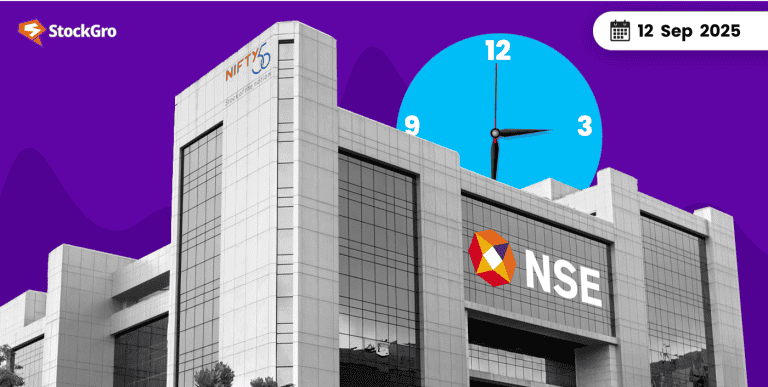
A core challenge for investors is finding options that deliver real wealth creation, not just capital protection. According to AMFI, equity mutual fund inflows in July 2025 surged 81% month-on-month to ₹42,702 crore, showing rising demand for growth-oriented products. Among them, growth mutual funds stand out by targeting companies with earnings expansion and capital appreciation. But what is a growth mutual fund? In this blog, we’ll discuss its meaning, working, and more in detail.
What Is a Growth Mutual Fund?
A growth mutual fund is an investment scheme that primarily puts money into companies expected to expand faster than average. These companies usually reinvest their profits rather than paying dividends. The idea is to benefit from long-term capital appreciation as the share prices of these businesses grow, making it suitable for wealth-building investors.
Growth Mutual Fund Meaning & Definition
A growth mutual fund is a type of equity-focused fund designed to maximise capital appreciation over time. Instead of distributing earnings through dividends, the profits are plowed back into the fund to buy more shares of growth-oriented companies. This makes the value of your investment increase with the rise in stock prices, offering higher growth prospects compared to income or balanced funds, though with greater exposure to market fluctuations.
How Growth Mutual Funds Work
Growth mutual funds function by investing in companies with expansion potential, as follows:
- Stock selection process: Fund managers choose companies with strong business models, rising revenues, and earnings that show potential for long-term growth.
- Capital appreciation focus: Instead of distributing regular income, these funds build wealth by increasing the share price of the companies held in the portfolio.
- Reinvestment of profits: Any dividends or gains are automatically reinvested, which adds more units to the investor’s holding and strengthens compounding over time.
- Market-linked returns: Since these funds are equity-oriented, their performance depends on stock market conditions, leading to both growth opportunities and value fluctuations.
Types of Growth Mutual Funds (Large-, Mid-, Small-Cap)
Growth mutual funds are divided by company size as per SEBI’s categorisation, as follows:
- Large-cap funds
These invest in the top 100 companies by market capitalisation. Such companies are usually industry leaders with stable earnings. Returns are relatively steady, and risks are lower compared to smaller categories.
- Mid-cap funds
These target companies ranked 101st to 250th by market capitalisation. Companies in this range are generally in their growth stage, offering higher return potential than large caps but with added volatility.
- Small-cap growth funds
These focus on companies ranked 251st and beyond by market capitalisation. They are often younger businesses with scope for rapid expansion. While they offer opportunities for higher gains, they also come with the highest risk of value swings.
Also, to see how these categories have performed historically, here’s a look at their returns over 5 and 10 years as on Sep 10, 2025 :
| Fund type | 5-year returns | 10-year returns |
| Large-cap funds | 18.72% | 13.16% |
| Mid-cap funds | 26.63% | 16.67% |
| Small-cap growth funds | 29.42% | 17.99% |
Keep in mind that the Association of Mutual Funds in India (AMFI), working with SEBI and stock exchanges (BSE, NSE, MSEI), prepares and publishes this ranked list every six months. Mutual funds must then rebalance their portfolios accordingly within one month.
Features & Benefits of Growth Mutual Funds
The features and benefits of growth mutual funds are as follows:
- Focus on expanding companies: Investments are directed toward businesses showing consistent earnings and revenue growth to support long-term wealth building.
- Automatic reinvestment of earnings: Dividends and profits are added back into the scheme, steadily increasing the number of units and enhancing compounding.
- Spread across multiple industries: Portfolios include companies from varied sectors like banking, IT, and healthcare, reducing reliance on a single industry.
- Equity-centric portfolio design: A significant share of assets remains in equities, creating opportunities for capital appreciation while carrying market-driven risks.
- Research-led portfolio building: Fund managers apply research and analysis to choose companies positioned for sustained expansion.
- Designed for multi-year goals: These funds are structured with investment horizons of several years, matching objectives like retirement or education planning.
- Oversight under SEBI rules: Regular disclosures and regulated frameworks ensure transparency in how assets are managed and reported.
Risks & Who Should Invest
Growth mutual funds target capital appreciation by investing in high-growth companies, but they come with specific risks, as follows:
- Possibility of underperforming benchmarks
Actively managed funds may not always deliver better than the index they track. For example, in 2023, nearly 52% of large-cap funds lagged behind the S&P BSE 100, showing that even established funds can fall short of market returns.
- Sector concentration risk
Funds tilted toward one or two sectors face sharper losses when those areas cool down. In early 2025, small-cap funds overweight in technology and industrials saw double-digit declines averaging – 11.72%.
- Liquidity pressure in small-caps
Since growth funds often invest in smaller companies, redemptions during volatile markets can strain liquidity. SEBI’s 2025 stress test found small-cap funds may need 25–57 days to offload half their holdings.
Investors who may consider growth mutual funds include:
- Individuals seeking long-term capital growth over 5+ years.
- Those comfortable with stock market swings and temporary losses.
- People building a retirement corpus or funding long-term goals.
- Investors aiming for compounded wealth creation rather than immediate income.
- Those who can remain invested consistently, even during downturns.
Growth vs. Dividend (IDCW) Fund Options
These two mutual fund options function in distinct ways. Here’s how they differ:
| Aspect | Growth funds | Dividend / IDCW funds |
| Profit handling | Profits are kept in the fund, automatically reinvested. | Profits are paid out to investors (as IDCW), reducing the fund’s retained earnings. |
| NAV behaviour | NAV continues rising as earnings accumulate. | NAV drops by the payout amount after each IDCW declaration. |
| When you pay tax | Tax applies only on redemption or sale (capital gains). | Tax on IDCW payout is due in the year it is distributed. |
| Tax rate & TDS | Not applicable (no payouts) until you redeem. | IDCW is taxed at your income-slab rate; TDS at 10% if IDCW > ₹10,000/year (as of FY 2025-26). |
| Capital gains tax (equity funds) | Short-Term (≤12 months) taxed at 20%, Long-Term (>12 months) taxed at 12.5% on gains above ₹1.25 lakh/year. | The same rules on redemption apply. |
| Debt funds/ Hybrid or other schemes | If the scheme is equity-oriented (≥65% equity), taxed like equity; else taxed under debt rules. New rules from April 1, 2023 for debt funds remove indexation benefits for gains in many cases. | IDCW dividends from debt or hybrid are also taxed at slab rates in the year of distribution. |
| Tax efficiency & timing | More tax-efficient for long-term wealth building since no interim tax on earnings; compounding effect is stronger. | Less tax-efficient (for some), because you pay tax on IDCW payouts regularly, reducing what can be compounded. |
How to Invest in Growth Mutual Funds
The process of investing in growth mutual funds involves a few clear steps, as follows:
- Check KYC status: Complete Know Your Customer (KYC) formalities via AMFI’s portal or AMC website. PAN, address proof, identity documents are usually required.
- Select a scheme: Choose a growth-oriented fund option matching your risk tolerance (large-cap, mid-cap, or small-cap).
- Decide on lump sum or SIP: Invest either once via lump sum or regularly using a SIP (Systematic Investment Plan) to benefit from rupee cost averaging.
- Use official platforms: Invest through AMC websites, authorised distributors, or trusted investment apps; verify that the platform is genuine.
- Link bank account: Provide bank account details for redemption and payments; some platforms require registration of bank accounts for auto-debits in SIPs.
- Monitor performance: Keep track of fund performance via NAV updates, statements, and comparing with benchmark indices.
Conclusion
Long-term capital growth comes from funds that reinvest profits and focus on high-growth companies. With a growth mutual fund, disciplined investing through SIP or lump sum maximises compounding. Understanding what is a growth mutual fund? guides investors in selecting schemes that align with their goals, making it easier to build a wealth portfolio that grows steadily over the years.
FAQs
Growth mutual funds are exposed to higher volatility, risk of underperformance during downturns, possible loss of principal, and generally do not pay dividends. They also carry higher expense ratios and are best suited for investors with a higher risk appetite.
Growth mutual funds focus on capital appreciation by investing in companies with high growth potential and typically reinvest gains. Dividend or income funds invest in companies that pay regular dividends, offering more stable but potentially lower returns and supplemental income.
Growth mutual funds can invest in all: large-cap, mid-cap, and small-cap companies. The focus is on firms with strong earnings and revenue growth potential, regardless of size, but risk levels and volatility increase with mid- and small-cap exposures.
Main benefits include the possibility for high long-term returns, professional management, diversification across sectors, and compounding gains. These funds are ideal for investors seeking substantial capital appreciation and willing to accept higher short-term fluctuations.

